Spring mattresses for children from 3 years old
Steel springs for children's mattresses are formed into blocks that provide an orthopedic effect: in those places where the body weight is greatest, the springs should bend, and those where it is less - provide support. The principle of operation is the same as in products for adults, but there are some differences.
The child's body weight is significantly less, therefore, to achieve the required effect, the springs must be softer and have a smaller size. The rest of the characteristics are similar. So, spring mattresses for children can also have dependent or independent spring units covered with sheet material. Although there are no differences in appearance, the properties of dependent and independent blocks differ significantly.

Mattress for children with dependent spring block
The springs for these children's mattresses are woven in a continuous method. They were the first to hit the market and are often referred to as “bonnell” after the first manufacturer. Different firms produce models that differ in the number of turns in the spring itself, the diameter and number of springs per square meter. The smaller the diameter and the higher the density (the number of springs per unit area), the higher the quality of the mattress. But in any case, "Bonnel" is inferior to "independent" models.
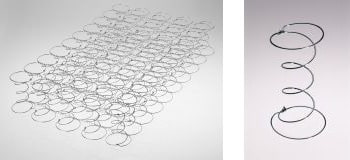
Pros:
- Low price;
- Good ventilation.
Minuses:
- Poor orthopedic support;
- Noisiness;
- Short service life;
- The surface of the entire mattress fluctuates with any movement;
- Has a hammock effect: the pelvic region is lower than the rest of the body;
- In addition, in cheap models, a thin layer of felt, foam rubber is used as a flooring - springs can be felt through such a coating.
If you need to choose a mattress for a child from 3 years old, it is better to give preference to other types of mattresses.
Mattress for children with an independent spring block
In this type of model, each spring is housed in a separate fabric cover. If one of them shrinks, the neighboring one does not react in any way, which provides good orthopedic support. The models themselves differ from each other in the size and diameter of the springs, their density of distribution and the type of installation (there is a variant of "double springs" when one of them is inserted into the other to provide greater rigidity).
The weight of a child is much less than that of an adult, so he does not need particularly strong springs, and the number of them may be less. For example, an option with a density of 250 with a spring diameter of about 4 cm is quite suitable, and it will cost less than an option with a density of 500 or more.
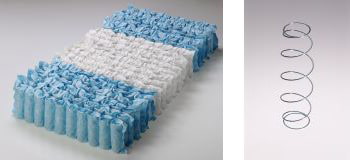 Pros:
Pros:
- Provides full orthopedic support by evenly distributing the load;
- Doesn't make noise;
- The surface remains motionless during the movements of the sleeper;
- The best price-quality ratio.
Minuses:
- High height, which is not always convenient when used in a crib;
- The mattress is quite heavy, it is inconvenient to carry it to cleaning, and this need may arise quite regularly.
Children's mattresses from 3 years old, made on the basis of independent spring blocks, will provide the child with the correct development of the musculoskeletal system and comfort, and the relatively high cost will pay off with a long service life.
Springless orthopedic mattresses for children from 3 years old
Therapists believe that such models are preferable for the child. There are several reasons for this:
- Do not make noise;
- They do not contain metal parts, cannot cause injury;
- Relatively lightweight, making cleaning easier.
Such mattresses are made for both adults and children, combining sheet fillers into single blocks. By varying the materials for the fillers, they achieve different rigidity and vary the orthopedic properties. As fillers for mattresses for children from 3 years old are used:
PPU
Polyurethane foam has a fairly low density, but also low cost. Its ability to support the spine is slightly higher than that of foam rubber. Service life is short.
Pros:
- Affordable price;
- Great strength;
- Ease;
- Elasticity, resilience.
Minuses:
- Short service life;
- Poor moisture permeability;
- May release harmful substances into the air.
- Experts do not recommend purchasing such mattresses for a child.
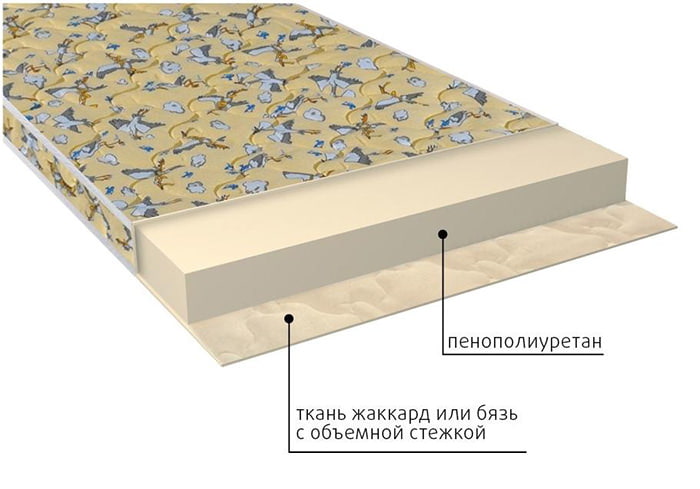
Latex
Completely natural material that meets the most stringent standards and requirements for products for children. Due to the high price, as a rule, the final product contains no more than 40 percent natural latex, but this is quite enough. Latex itself is a very elastic material, so the degree of rigidity is regulated by making holes in it: the more holes, the softer the mattress.
Pros:
- Hypoallergenic;
- Does not emit toxic substances;
- Provides orthopedic support and proper formation of the musculoskeletal skeleton;
- Possesses excellent air and moisture permeability;
- Provides a high level of comfort.
Minuses:
- High price.
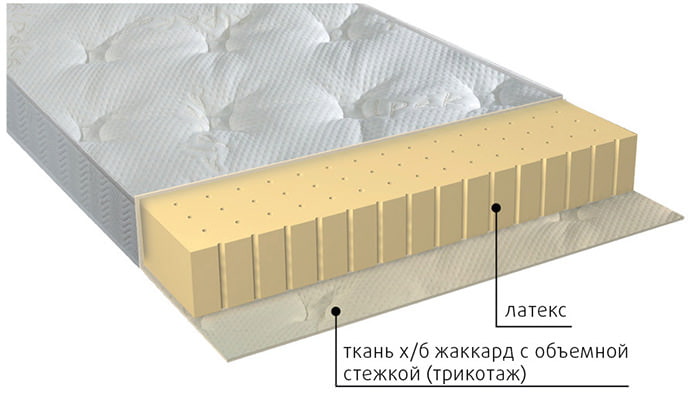
Coyra
Vegetable fiber obtained from coconuts is a very popular material for the production of mattresses for children due to its natural qualities. However, by itself it is too hard, the coir sheet is comparable in rigidity to a chipboard sheet. Therefore, coir sheets are usually impregnated with artificial latex for softening, or supplemented with latex or PU foam sheets.
Pros:
- Naturalness, environmental friendliness;
- Long service life.
Minuses:
- Increased rigidity
Important: Cheap samples can be impregnated with synthetic material that looks like latex but contains additives that are harmful to children, such as formaldehyde. If you are not sure about the quality of the product, it is better to purchase a spring block.

Other fillers
In addition, sheep and camel wool, polyester fibers (ekofiber, komerel), synthetic winterizer, holofiber and even swan down are often used as fillers. In fact, with all the advantages available, these materials are not suitable for the manufacture of children's mattresses from 3 years old, and primarily due to the fact that they do not have orthopedic properties. Moreover, natural is not always a synonym for the word "best".
Both down and wool can cause allergies in children. Synthetic fibers are hypoallergenic, but they do not conduct heat well, and almost do not "breathe" - a child on such a bed will overheat and sweat. Some of the listed fillers can be used as one of the layers, but you cannot make a whole mattress out of them.
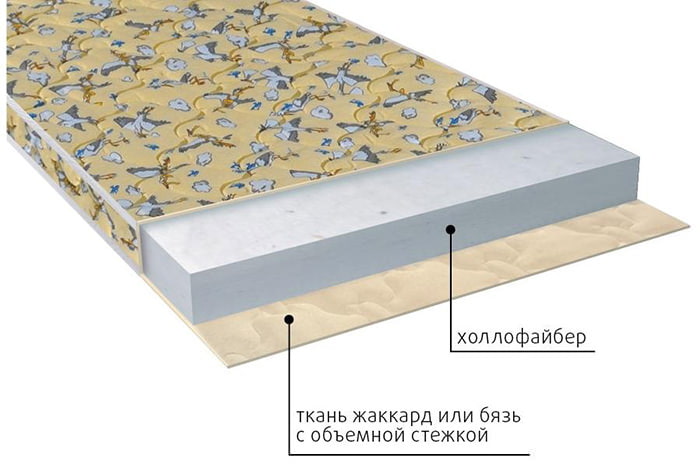
Which mattress to choose for a child from 3 years old, spring or springless?
And among spring and springless mattresses for children there are those that have high orthopedic properties, and those that do not. Therefore, it is rather difficult to compare them. For example, a mattress for children with an independent block, covered with a latex sheet on top, will definitely be better than a PU foam block, and a latex block is superior in properties to almost any spring mattress.
It is believed that the following options are most suitable for children:
- Springless. A latex block is good for everyone, except for one thing - it is quite expensive. If you can afford it, rest assured that it really is the best choice.
- Spring independent. It will cost less than latex. But you need to pay attention to what the top is covered with. It is best if it is a thin layer of coir with a thin layer of latex on top.
Advice: Child health is not something to save on. The quality of the mattress on which your baby sleeps directly affects the formation of his body, and, therefore, the quality of his entire future life.
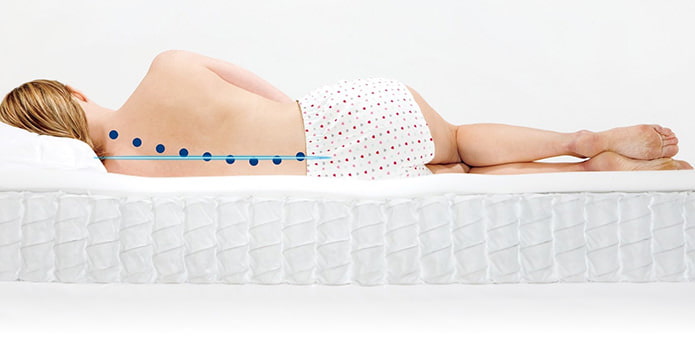

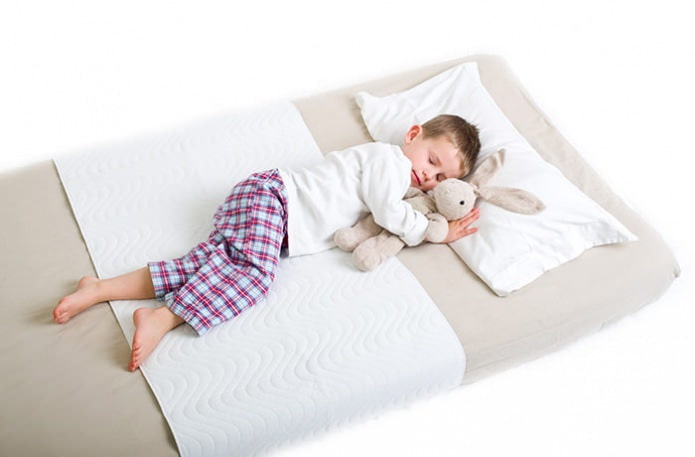
 10 practical tips for arranging a small kitchen in the country
10 practical tips for arranging a small kitchen in the country
 12 simple ideas for a small garden that will make it visually spacious
12 simple ideas for a small garden that will make it visually spacious
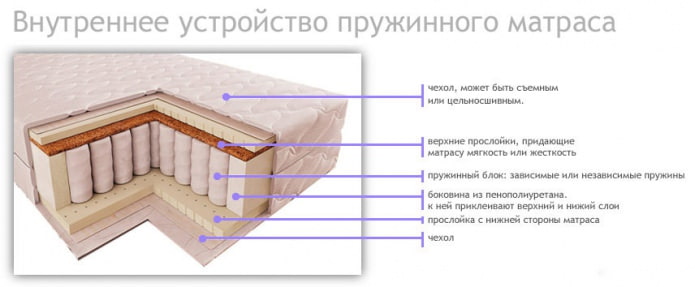
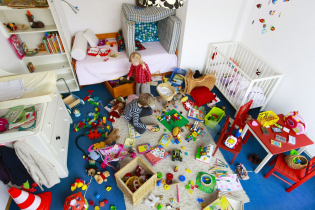 5 ways to turn your child's room clutter into a perfectionist's paradise
5 ways to turn your child's room clutter into a perfectionist's paradise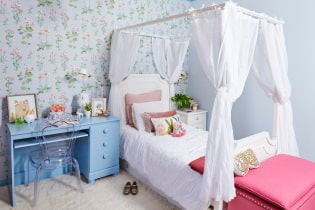 Design of a children's room for a girl
Design of a children's room for a girl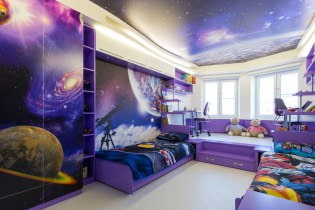 Stretch ceiling in the nursery: 60 best photos and ideas
Stretch ceiling in the nursery: 60 best photos and ideas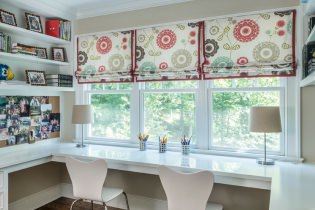 Curtains for the nursery: types, choice of color and style, 70 photos in the interior
Curtains for the nursery: types, choice of color and style, 70 photos in the interior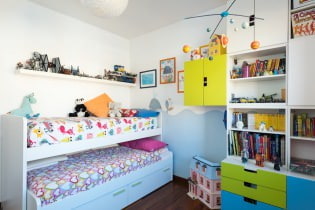 Interior of a small nursery: choice of color, style, decoration and furniture (70 photos)
Interior of a small nursery: choice of color, style, decoration and furniture (70 photos) Choosing wallpaper for a children's room: 77 modern photos and ideas
Choosing wallpaper for a children's room: 77 modern photos and ideas